Serving 631 students in grades Kindergarten-5, Clover Ridge Elementary School ranks in the top 20% of all schools in Minnesota for overall test scores (math proficiency is top 20%, and reading proficiency is top 20%).
The percentage of students achieving proficiency in math is 63% (which is higher than the Minnesota state average of 45%). The percentage of students achieving proficiency in reading/language arts is 60% (which is higher than the Minnesota state average of 51%).
The student:teacher ratio of 16:1 is higher than the Minnesota state level of 13:1.
Minority enrollment is 31% of the student body (majority Black and Hispanic), which is lower than the Minnesota state average of 39% (majority Black and Hispanic).
Quick Stats (2025)
- Grades: Kindergarten-5
- Enrollment: 631 students
- Student:Teacher Ratio: 16:1
- Minority Enrollment: 31%
- Overall Testing Rank: Top 20% in MN
- Math Proficiency: 63% (Top 20%)
- Reading Proficiency: 60% (Top 30%)
- Science Proficiency: 60-64% (Top 20%)
- Source: National Center for Education Statistics (NCES), MN Dept. of Education
Top Rankings
Clover Ridge Elementary School ranks among the top 20% of public schools in Minnesota for:
Category
Attribute
Overall Rank
Math Proficiency
Science Proficiency
School Overview
Clover Ridge Elementary School's student population of 631 students has stayed relatively flat over five school years.
The teacher population of 39 teachers has grown by 8% over five school years.
Grades Offered
Grades Kindergarten-5
Total Students
631 students
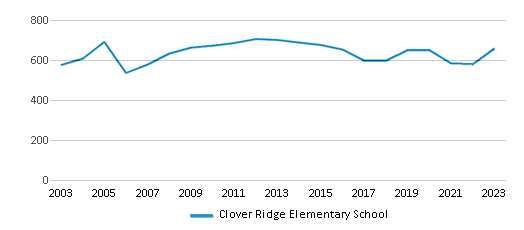
Gender %
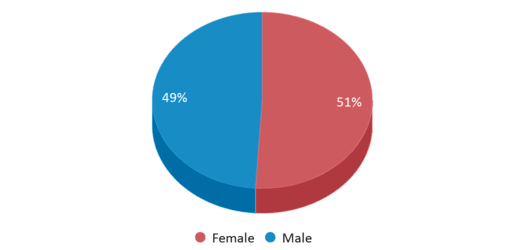
Total Classroom Teachers
39 teachers
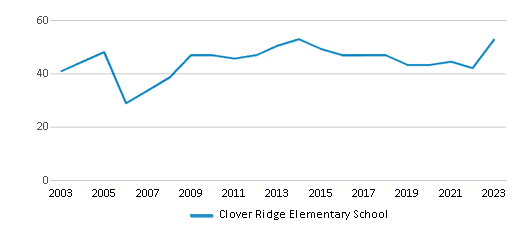
Students by Grade
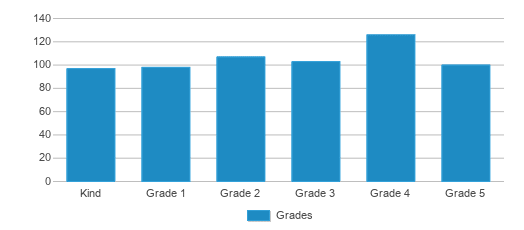
School Rankings
Clover Ridge Elementary School ranks within the top 20% of all 1,860 schools in Minnesota (based off of combined math and reading proficiency testing data).
The diversity score of Clover Ridge Elementary School is 0.50, which is less than the diversity score at state average of 0.59. The school's diversity has stayed relatively flat over five school years.
Overall Testing Rank
#296 out of 1860 schools
(Top 20%)
(Top 20%)
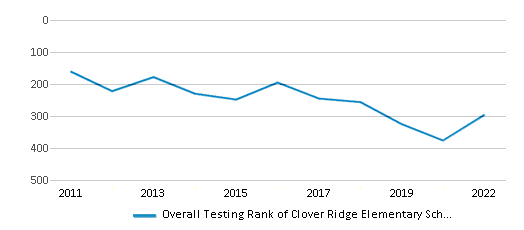
Math Test Scores (% Proficient)
63%
45%
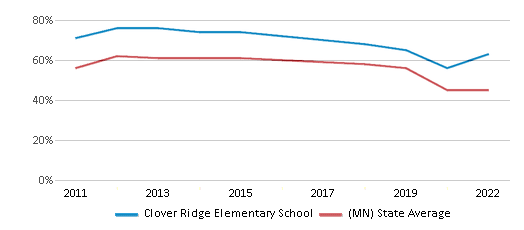
Reading/Language Arts Test Scores (% Proficient)
60%
51%
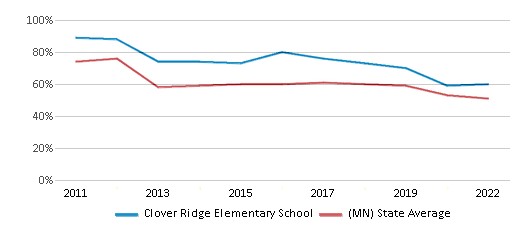
Science Test Scores (% Proficient)
60-64%
41%
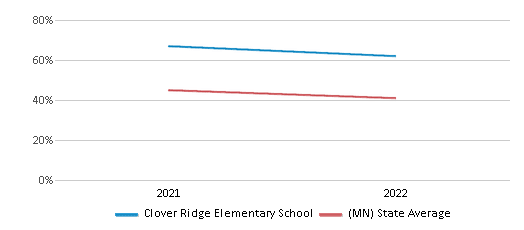
Student : Teacher Ratio
16:1
13:1
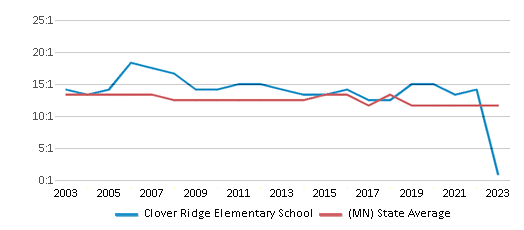
American Indian
1%
2%
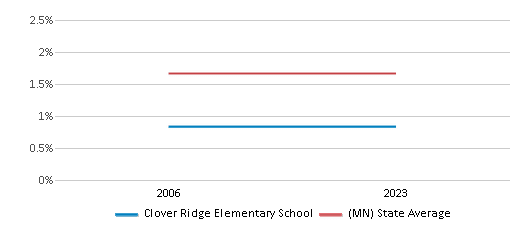
Asian
4%
7%
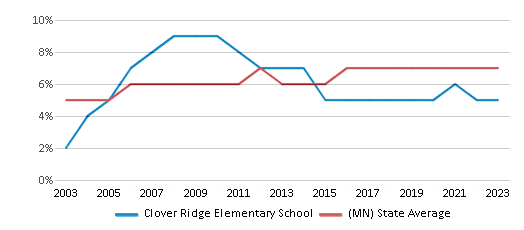
Hispanic
10%
12%
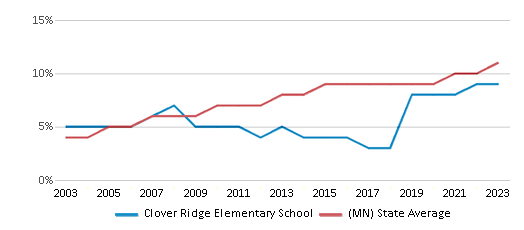
Black
10%
12%
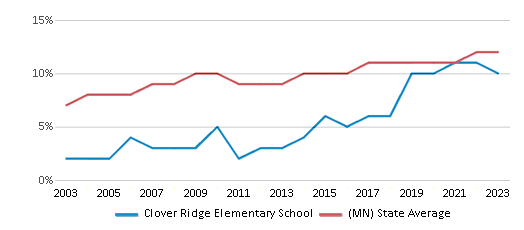
White
69%
61%
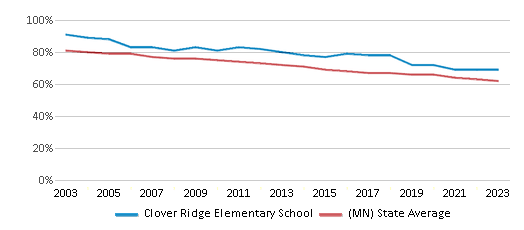
Hawaiian
n/a
n/a
Two or more races
6%
6%
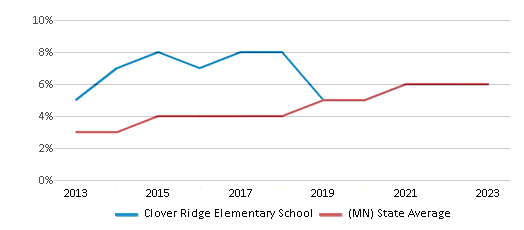
All Ethnic Groups
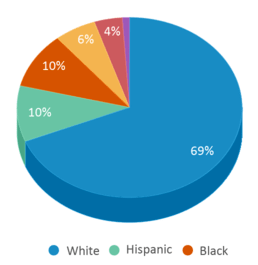
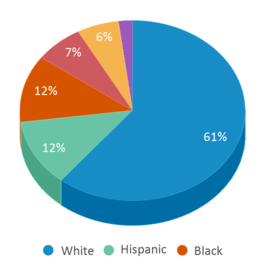
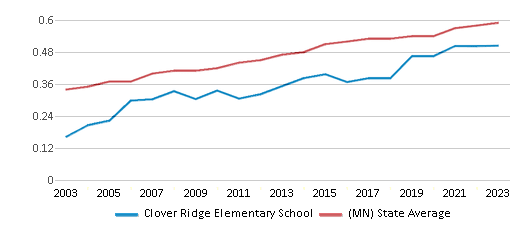
Participates in the National School Lunch Program (NSLP)
Yes
Eligible for Free Lunch
21%
36%
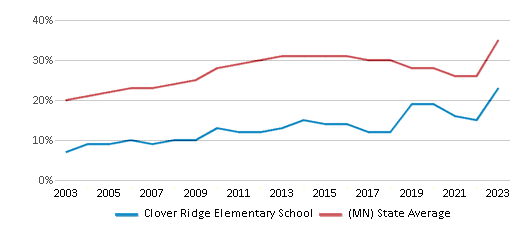
Eligible for Reduced Lunch
6%
7%
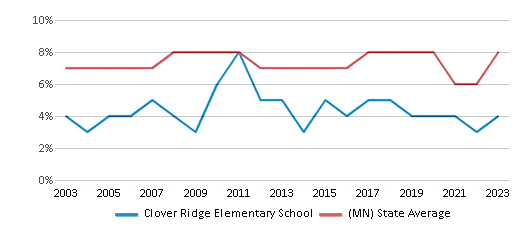
School Statewide Testing
School District Name
Source: National Center for Education Statistics (NCES), MN Dept. of Education
Profile last updated: 02/09/2025
Frequently Asked Questions
What is Clover Ridge Elementary School's ranking?
Clover Ridge Elementary School is ranked #296 out of 1,860 schools, which ranks it among the top 20% of public schools in Minnesota.
What percent of students have achieved state testing proficiency in math and reading?
63% of students have achieved math proficiency (compared to the 45% MN state average), while 60% of students have achieved reading proficiency (compared to the 51% MN state average).
How many students attend Clover Ridge Elementary School?
631 students attend Clover Ridge Elementary School.
What is the racial composition of the student body?
69% of Clover Ridge Elementary School students are White, 10% of students are Hispanic, 10% of students are Black, 6% of students are Two or more races, 4% of students are Asian, and 1% of students are American Indian.
What is the student:teacher ratio of Clover Ridge Elementary School?
Clover Ridge Elementary School has a student ration of 16:1, which is higher than the Minnesota state average of 13:1.
What grades does Clover Ridge Elementary School offer ?
Clover Ridge Elementary School offers enrollment in grades Kindergarten-5
What school district is Clover Ridge Elementary School part of?
Clover Ridge Elementary School is part of Eastern Carver County Public School District.
School Reviews
2 12/16/2022
The school is great academically, however the environment the so called "booster club" creates is unbearable. They give you this whole speech about how inner city schools do bad and get more money, while Clover does great and gets no funding. However, no numbers or proof is provided to support this claims. This story they've created leads to the booster club demanding hundreds of dollars to be "donated" per child. How do they demand this money? By keeping track of who donates and how much they give, and harass and shame publicly those who do not meet the ideal $600 donation. I personally had my kid's teacher tell him in front of the class that his parents hadn't donated and because of him the class wasn't going to have an ice cream party. My kindergartener came home sad and crying because of this and I had to explain him that we couldn't afford to give money to the school (this is after we bought the required and optional supplies at the beginning of the year, bought a Clover shirt, volunteered for a couple of events, and paid for field trips out of our pocket- not enough, apparently!). Another parent was confronted by her kid's teacher during open house, telling her in front of everyone to just give a couple of hundred dollars already. The meetings and speeches by the booster club are all about money and very condescending. Yes, this might be a middle class neighborhood but a good percentage of the school qualifies for free lunches. This is a public school, after all, something the booster club parents tend to forget. The way they conduct their donation drive is senseless, and the fact that the teachers and principal support and help this charade just makes it worse. I would happily donate money or my time if the environment at the school was better. But there is a clear division between those who have money and are welcome, and those who don't.
Review Clover Ridge Elementary School. Reviews should be a few sentences in length. Please include any comments on:
- Quality of academic programs, teachers, and facilities
- Availability of music, art, sports and other extracurricular activities
Recent Articles

What Is A Charter School?
Explore the world of charter schools in this comprehensive guide. Learn about their history, how they operate, and the pros and cons of this educational innovation. Discover key facts about charter schools, including admission policies, demographics, and funding, as well as what to look for when considering a charter school for your child.

10 Reasons Why High School Sports Benefit Students
Discover the 10 compelling reasons why high school sports are beneficial for students. This comprehensive article explores how athletics enhance academic performance, foster personal growth, and develop crucial life skills. From improved fitness and time management to leadership development and community representation, learn why participating in high school sports can be a game-changer for students' overall success and well-being.

February 05, 2025
Understanding the U.S. Department of Education: Structure, Impact, and EvolutionWe explore how the Department of Education shapes American education, from its cabinet-level leadership to its impact on millions of students, written for general audiences seeking clarity on this vital institution.






